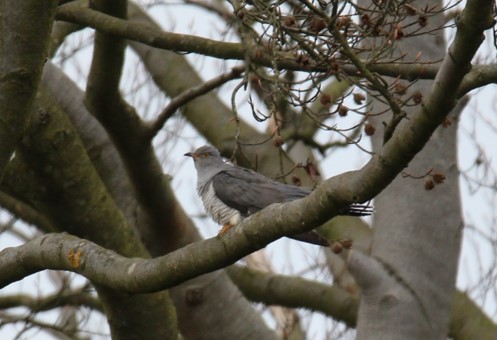

Spring Bird Migration and the Weather
by David Flack, University of Reading
My passion for bird watching began before my passion for the weather. However, because bird watching is very dependent upon the weather, I have enhanced my bird watching skills by considering the dependence of bird behaviour on the weather.
Bird migration, in both the spring and autumn migration, is a prime example of where the weather influences the behaviour where wind direction and rainfall play a key part in the movements of birds. The spring migration (March-May) is useful for assessing population changes and the survival of species over the winter.
In general the commoner migrating species (Swallows, Nightingales, Chiffchaff, Swifts, etc.), due to their size and weight, prefer to fly with a tailwind to make the journey easier. However, in spring, there often comes a turning point where the breeding instinct comes in, and many species will push through a headwind to get to their breeding territories. This has been seen with certain species this year (e.g. Swallows). They will also often come in around weather fronts and showery conditions, which can provide movement of food sources and stronger tailwinds. To highlight that even perfect conditions can be difficult and the overall state of the migration season this year, I now consider the early migration in March and arrival dates of a few other species compared to my average sightings.
In March, I headed down to the southwest of England to search for some of the first arrivals of the spring. The conditions were not fully ideal throughout the entire period, with westerly to northerly winds being present. However, the wind direction became more favourable around 22nd March when the winds dropped and became more southerly. This day had perfect conditions for early migrants. I’d been watching the forecast previously and knew a good location would be around Lizard Point. It should have been particularly good for early migrants such as Wheatear. It took a surprisingly long time (mid-afternoon) before I eventually found a couple. Usually, birds are more active in the morning, particularly many migrating species. However, this day proved to be the turning point of the trip, and a couple of days later, I was starting to find a few more migrants (mainly Wheatear) and a Swallow near Penzance on 24th March.
Later in the season in April, the wind directions were very mobile, and the migration became variable, although the Swallows were still coming through in the northerlies in the middle of the month. This variability meant that, on average, birds were being reported very close to their average arrival dates for the past five years. Two good examples in terms of my records are my first Cuckoo being at the exact average time of first sighting, 1500 BST on 14th April, and my first Nightingale was three hours later than usual (1300 BST on 12th April). So it has been mixed affairs this year, but as usual, the wind direction has been the dominant factor in the arrival of the birds.
If English folklore is to be believed, some of our native birds make for reliable oracles of future weather conditions, but can birds forecast the weather?




